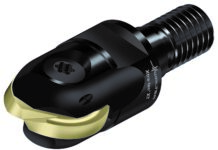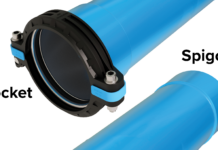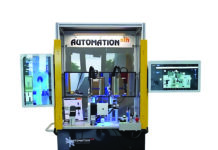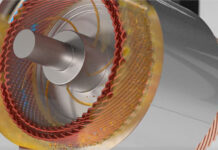 Warehouses and distribution centers are under an increasing amount of pressure to move more product through their facility faster. While the adage to have “a place for everything and everything in its place” may have once sufficed as a means for achieving warehouse efficiency, this practice alone is now insufficient. Companies looking to obtain and maintain a competitive advantage need tools and best practices that save time and money. The following ten suggestions, when strategically implemented, can help improve warehouse efficiency.
Warehouses and distribution centers are under an increasing amount of pressure to move more product through their facility faster. While the adage to have “a place for everything and everything in its place” may have once sufficed as a means for achieving warehouse efficiency, this practice alone is now insufficient. Companies looking to obtain and maintain a competitive advantage need tools and best practices that save time and money. The following ten suggestions, when strategically implemented, can help improve warehouse efficiency.
1. Examine Warehouse Layout
Warehouse layout directly impacts the speed with which materials are received, sorted, retrieved and shipped. Companies that understand this correlation create workflows that minimize the amount of unproductive time spent handling materials and equipment, resulting in higher levels of organization and productivity. For example, warehouse efficiency can be increased by placing the product packaging area near the shipping/receiving bay. By doing this, the amount of time spent transporting packages from other areas of the facility is decreased. Simple changes like this can dramatically improve warehouse efficiency.
2. Maximize All Available Space
For warehouses and distribution centers that are bursting at the seams, a facility renovation or move seems like the obvious solution. However, with ceiling heights in excess of 30-feet tall, most warehouses and distribution centers have not exhausted all the available square footage their facility has to offer. Industrial mezzanines provide a way for companies to fully utilize their existing overhead space, increasing warehouse efficiency and profitability at a fraction of the cost of the alternatives. While the mezzanine’s exact specifications will dictate the amount of installation time needed, most can be erected in a matter of weeks with minimal disruption to a facility’s daily operations.
3. Provide and Maintain the Right Equipment
When looking for ways to improve warehouse efficiency, it is imperative that companies invest in the right tools and equipment for the job. For instance, vertical reciprocating conveyors (VRCs) and rideable material lifts (RML) offer a safer and more efficient way to move warehouse cargo, especially when compared to a forklift or pallet jack. Companies that make wise investments in tools and equipment find that productivity and safety increase as employees are not forced to find time-consuming and dangerous workarounds. Additionally, warehouse efficiency can be enhanced through routine maintenance programs. Pre-shift equipment checks and scheduled recommended maintenance are a great way to catch and resolve potential equipment issues. By implementing this best practice, facilities increase their likelihood of staying fully operational.
4. Automate
Automation is a great way to improve warehouse efficiency. Companies that choose to automate quickly see an increase in throughput, productivity and order accuracy while simultaneously achieving a reduction in product damage. Common warehouse processes that can be automated include product sorting, storage, and transportation. While automation is a viable option for new and existing warehouses, careful consideration will need to be given to warehouse design. Specifically, warehouse layouts will need to be designed to accommodate the space requirements of the intended automated equipment. For information on how industrial mezzanines can provide the space needed for automation, read our blogpost: “Four Benefits of a Wildeck Mezzanine.”
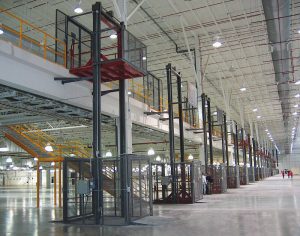 5. Eliminate Traffic
5. Eliminate Traffic
Traffic congestion is one of the greatest hinderances to warehouse efficiency. With people, equipment and materials all traveling in the same space at the same time, the likelihood of an accident is high. One way to improve warehouse efficiency is to establish clearly defined lanes for each type of traffic (i.e. motorized and pedestrian). To ensure personnel complies with established traffic patterns, companies should consider installing strong physical barriers like steel guard rail. When properly installed, steel guard rail creates a boundary that cannot be easily crossed, enhancing a company’s overall safety and productivity.
6. Train and Train Again
A lack of training and/or understanding can substantially undermine warehouse efficiency. Employees that are not properly educated can only operate based on what they think is correct, not what they know. Frequent and repeated training programs can bolster knowledge of best practice, creating environments that are safer and more productive. Companies looking to implement a robust training program should plan short meetings (30-45 minutes) that are dedicated to addressing one topic or process. Information presented this way is more easily digested and implemented, helping companies achieve their warehouse efficiency goals.
7. Get Employee Feedback
As is often the case, two-way communication is the key to success. In their efforts to improve warehouse efficiency, companies should not forget to solicit feedback and input from their employees as they are keenly aware of where the process pitfalls lie. Company initiatives that seek to obtain these insights should be administered frequently so that changes can be gradually and methodically implemented. By fostering a culture that continuously solicits the employee perspective, the likelihood of achieving and sustaining meaningful change is increased, allowing companies to meet or exceed their efficiency goals.
8. Prioritize Safety
Since accidents and injuries can substantially limit an employee’s productivity, companies looking to improve warehouse efficiency should closely examine their safety culture. One way that this can be done is through the formation of a safety committee comprised of individuals from across the organization. The diversity of perspectives will ensure that a variety of issues are addressed. Additionally, the employee engagement aspect will give committee members a sense of ownership in resolving issues and will more evenly distribute the responsibilities. Creating a safer, more efficient warehouse requires everyone’s participation. For help identifying the areas of your facility that could benefit from a safety upgrade, contact Wildeck for a free safety audit.
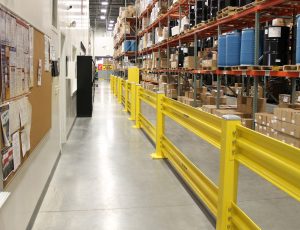 9. Implement Lean and Continuous
9. Implement Lean and Continuous
Improvement Practices The pressure placed up warehouses and distribution centers to do more with less is not a trend forecasted to leave anytime soon. One best practice that dramatically influences warehouse efficiency is the implementation of lean and continuous improvement practices. Simply put, lean and continuous improvement practices focus on streamlining workflows to save time and money while reducing wasted time and effort. Tangible benefits that companies recognize from implementing these practices include increased productivity and quality and decreased costs and employee turnover rates, all significant drivers of warehouse efficiency.
10. Measure and Report Performance
Key performance indicators (KPIs) are a set of measurements that quantify a company’s effectiveness in reaching their strategic and operational goals. Order lead time, backorder rate, picking accuracy and inventory turnover are common KPIs used to measure warehouse efficiency. The regular measurement and evaluation of KPIs give a company insight into the areas of the warehouse that are performing well and shines a spotlight on processes that need improvement. Once trouble spots have been identified, employee insights can be leveraged to address and resolve the issue.
About Wildeck
Efficiency should be the goal for every company no matter the staff size or industry. When carefully reviewed and applied, these ten tips can help warehouses and distribution centers achieve their warehouse efficiency goals. At Wildeck, they believe that they have a responsibility to ensure that our material handling products contribute to a company’s success.

